On May 12, at press conferences held simultaneously around the world, astronomers published the first ever image of the compact radio source Sagittarius A* located in the center of the Milky Way. The image proves that it really is a supermassive black hole.
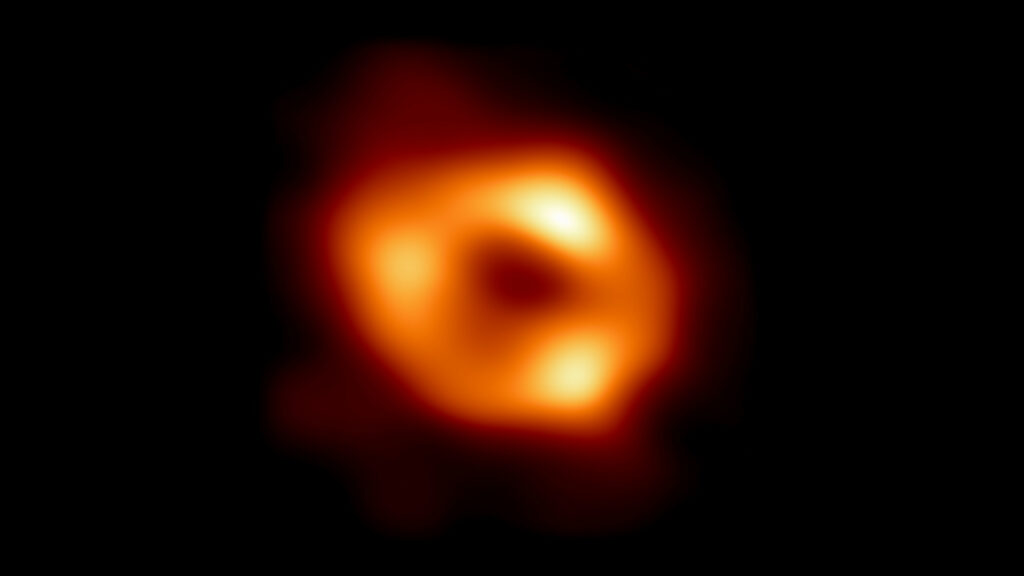
Mysterious object in the center of the Galaxy
For many years, scientists have observed the orbit of stars around some invisible, compact and very massive body in the center of the Milky Way. This object was named Sagittarius A*. Measurements have shown that its mass exceeds the mass of the Sun by four million times. Over the years of observations, researchers have accumulated a lot of evidence indicating that it is a supermassive black hole. But they needed decisive proof.
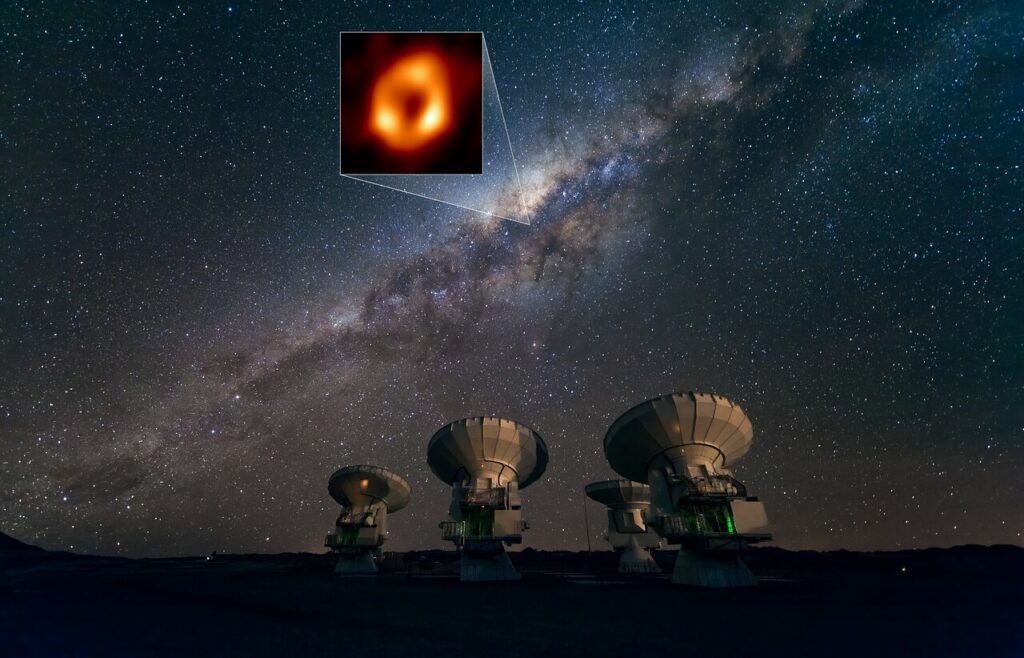
The problem was that the center of the Milky Way is closed by dense clouds, making it impossible to observe it in the visible range. Therefore, scientists turned to radio astronomy for help.
Event Horizon Telescope
The task of shooting Sagittarius A* was assigned to the international collaboration “Event Horizon Telescope” (EHT). It brought together over 300 scientists, 13 scientific institutes and eight of the Earth’s largest radio observatories located on four continents. In 2017, they observed the center of the Milky Way for many days. The data accumulated over many hours, just as it happens during long exposures with a camera. Then they were processed using a supercomputer.
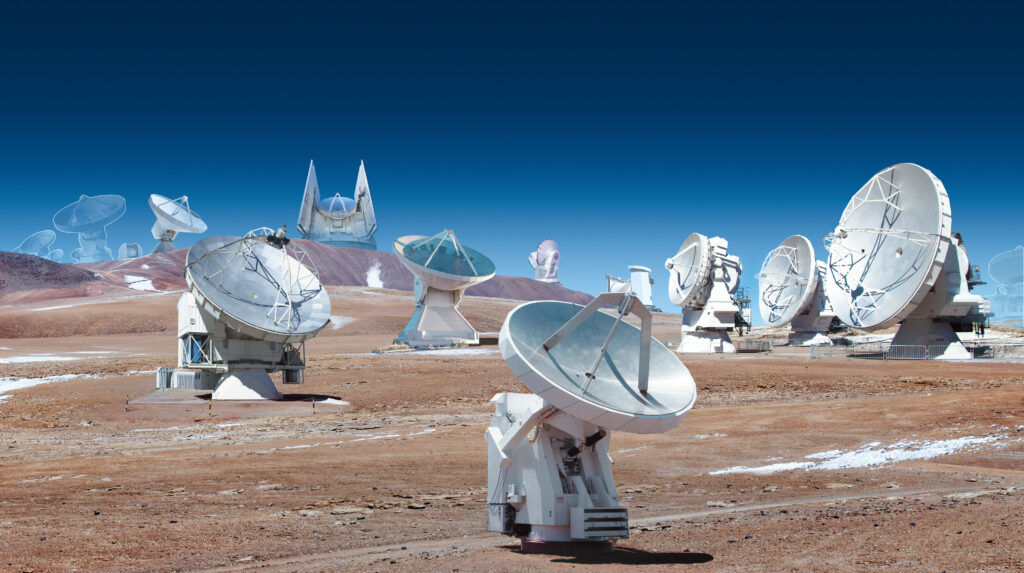
Recall that in 2019 EHT published a historical image of a black hole located in the center of the galaxy M87. It would seem that shooting a much closer Sagittarius A* was a much simpler task, and we should have seen its picture a long time ago. But this is not the case.
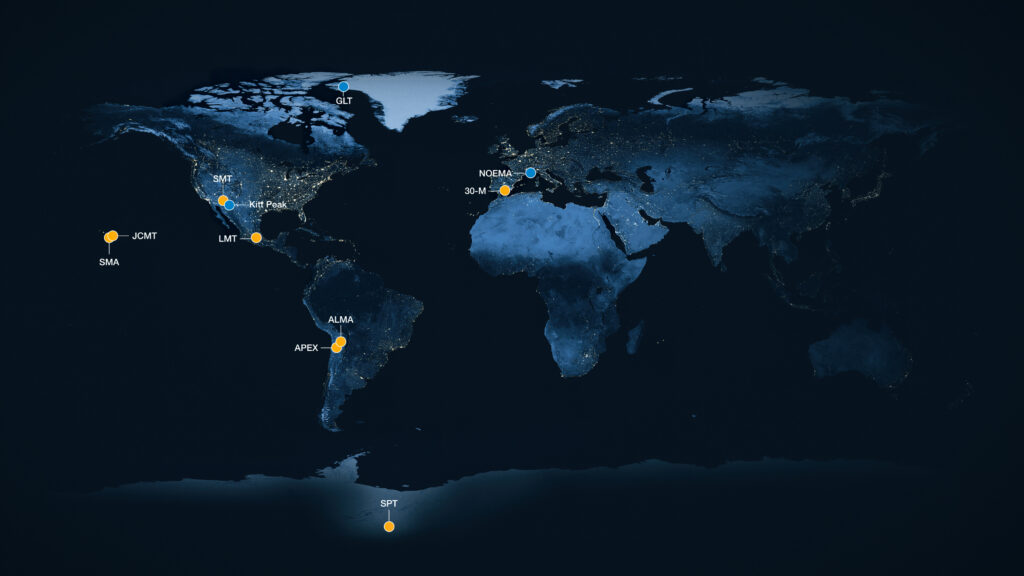
The fact is that the mass of the black hole at the center of M87 is 6.5 billion solar masses. Thus, it is 1500 times more massive than Sagittarius A*. Measurements have shown that the gas in the vicinity of both black holes is moving at the same speed, almost equal to the speed of light. But it takes from several days to several weeks for it to make one orbit around the much larger hole in the center of the galaxy M87. In turn, the gas makes one orbit around Sagittarius A* in just a few minutes. Because of this, its brightness and the structure of the observation time on EHT changed very quickly, which seriously complicated the task of obtaining an image.
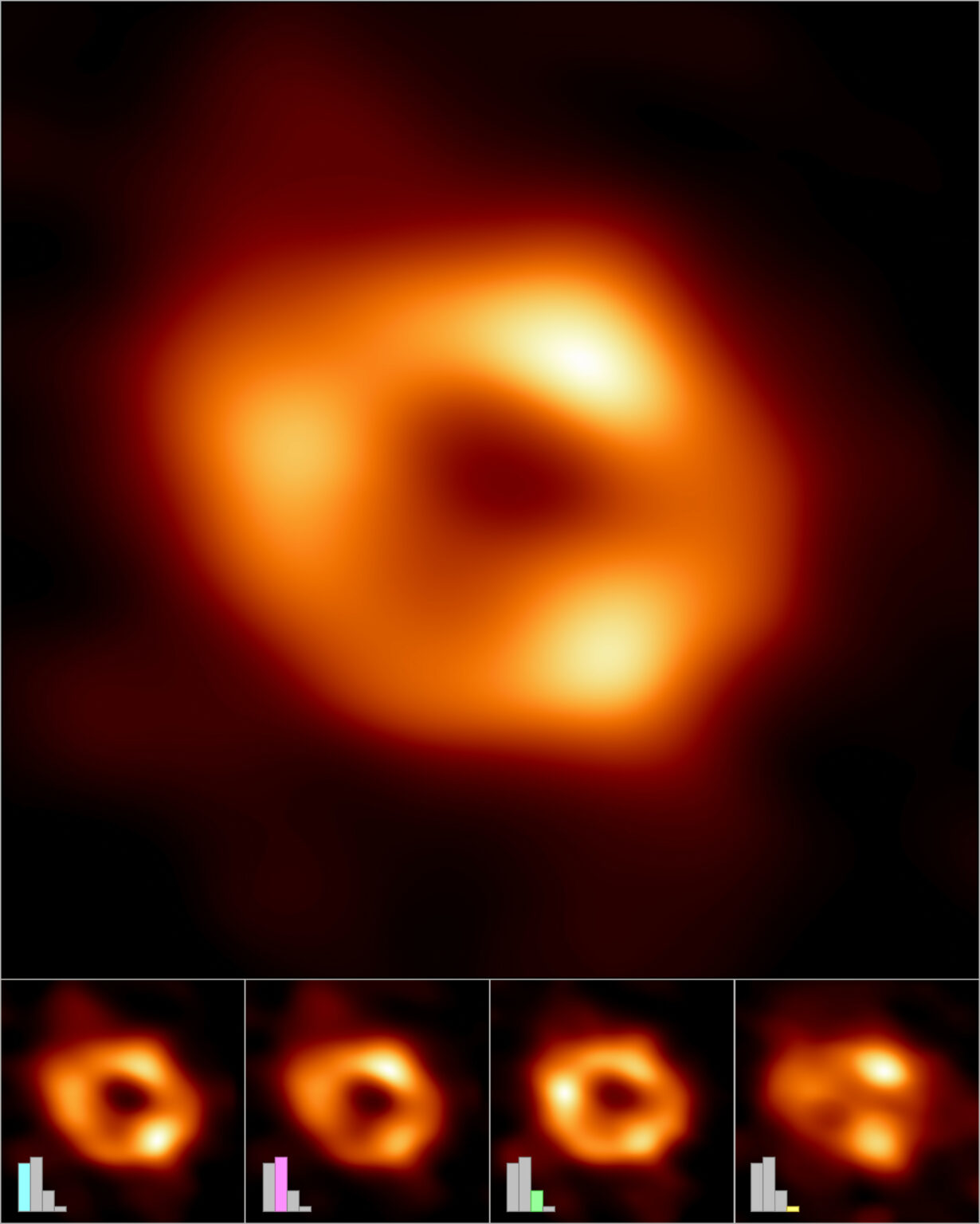
Therefore, the researchers had to develop new complex algorithms and programs to simulate the movement of gas around Sagittarius A*. Images of the black hole were averaged over many different individual visualizations, until finally EHT was able to reveal for the first time the shadow of a giant monster lurking in the center of the Galaxy.
Photo of a black hole
So what is captured in the EHT picture? Although we cannot see the black hole, since it is really absolutely black, it is given out by the surrounding glowing gas. Due to this, we observe a dark central region (called the shadow) surrounded by a bright ring-shaped structure. The image is formed by light rays curved by the powerful gravity of Sagittarius A*. According to the researchers, they were amazed at how exactly the size of the ring agrees with the predictions of Einstein’s theory of general relativity (GRT).
You can also note that, despite the significant difference in mass, the image of Sagittarius A * resembles the image of a hole in the center of the galaxy M87. This suggests that they obey the rules of GRT, and any visible differences are due to the substance surrounding them.
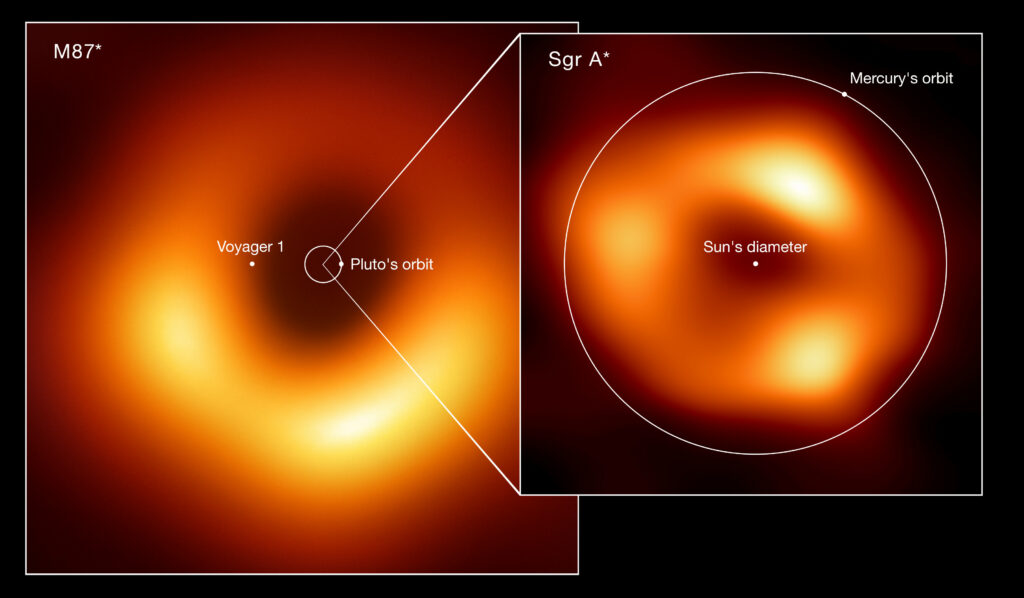
Astronomers now have images of two black holes of very different sizes at their disposal. This makes it possible to make comparisons and use them to test theories and models of gas behavior in the vicinity of supermassive black holes. Such processes are still far from being fully understood, but, apparently, they play a key role in the formation and evolution of galaxies.
It is also worth noting that the EHT project continues to develop, and new observatories are joining it. Further expansion of the telescope network and work on their technical improvement should allow astronomers to get even more impressive images and, possibly, even videos about black holes in the near future.
According to https://www.eso.org
Follow us on Twitter to get the most interesting space news in time
https://twitter.com/ust_magazine

